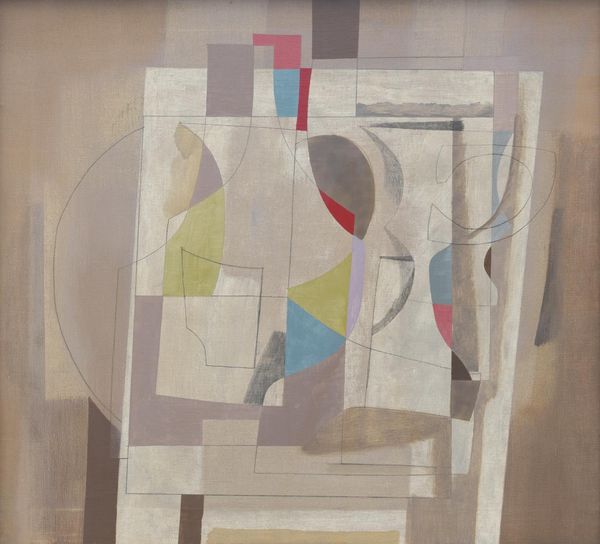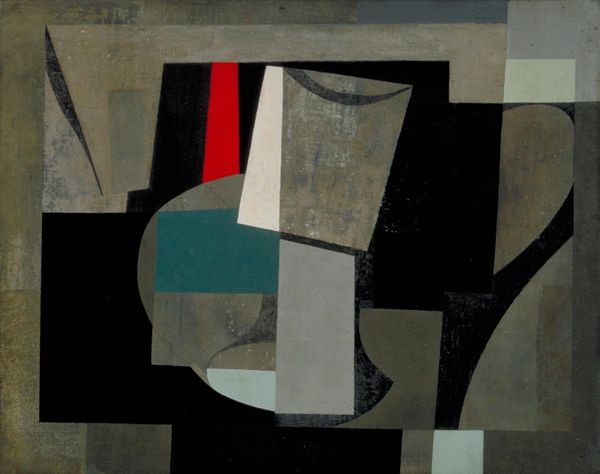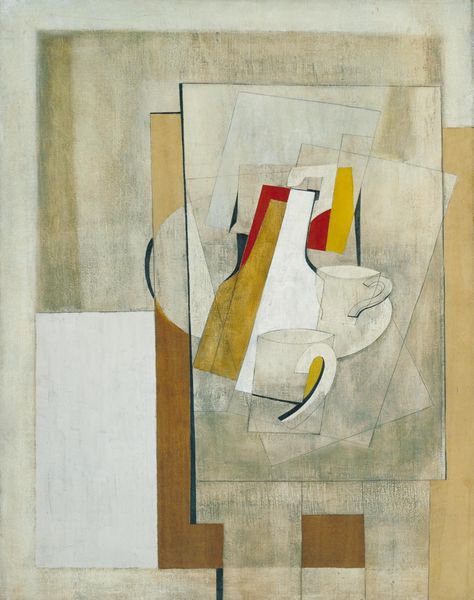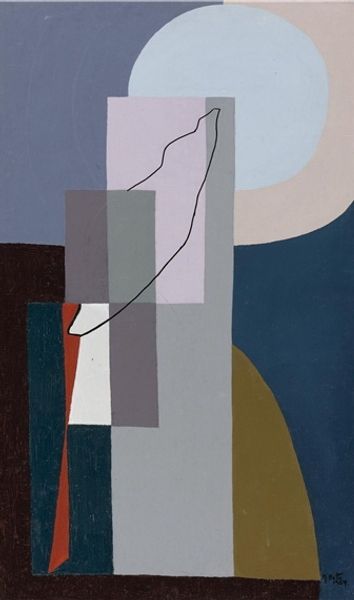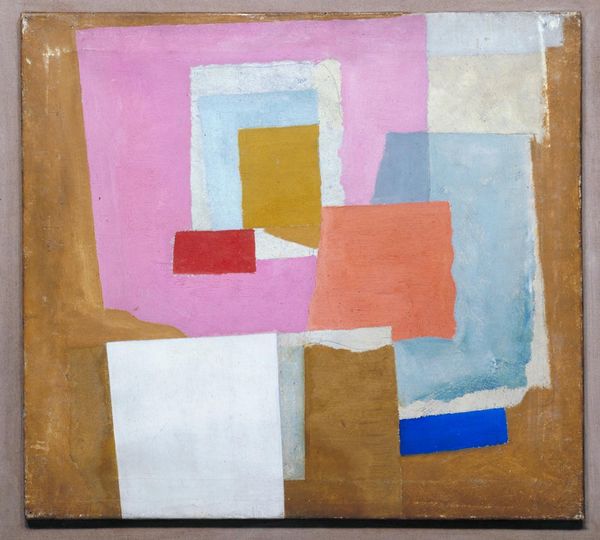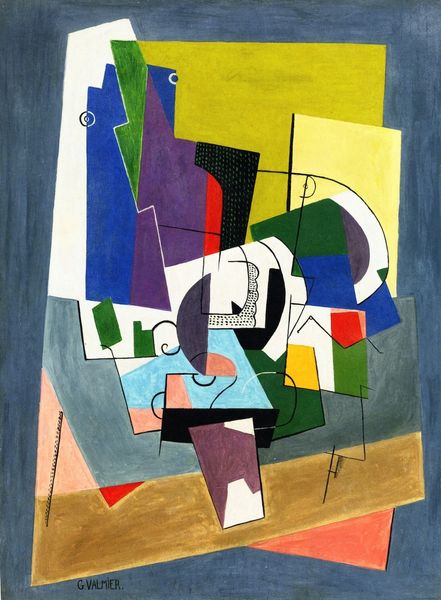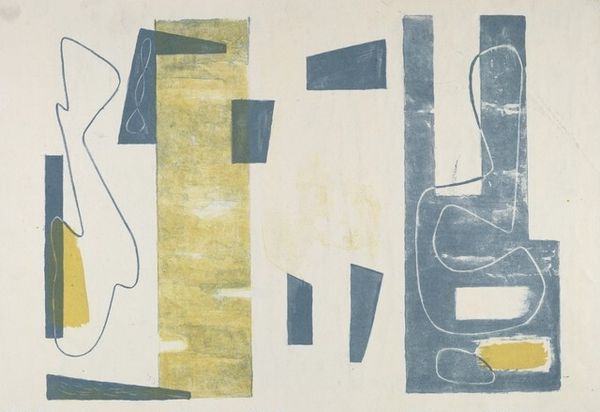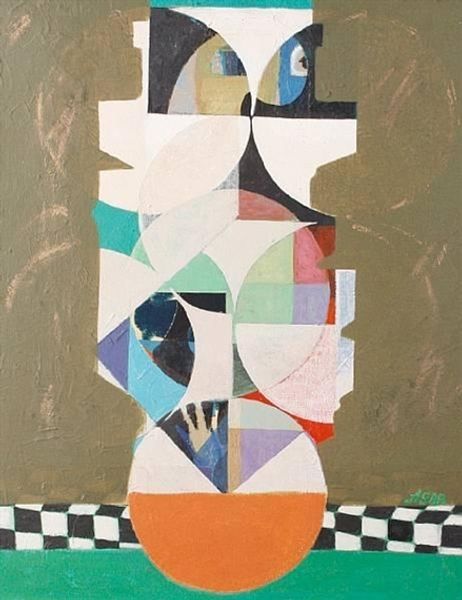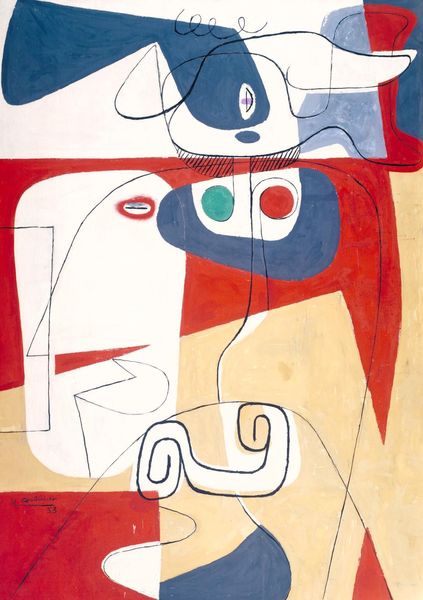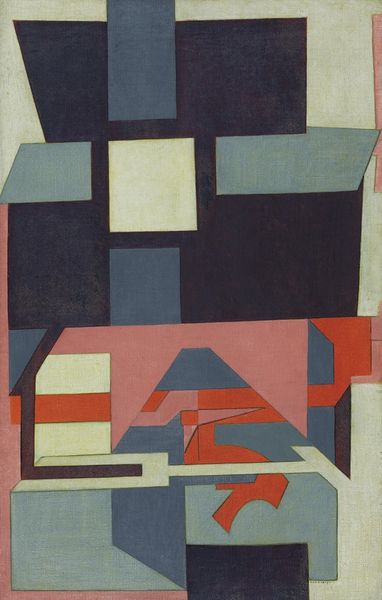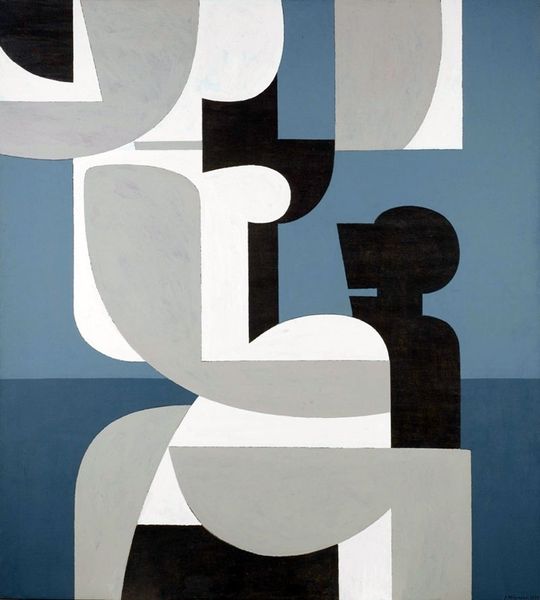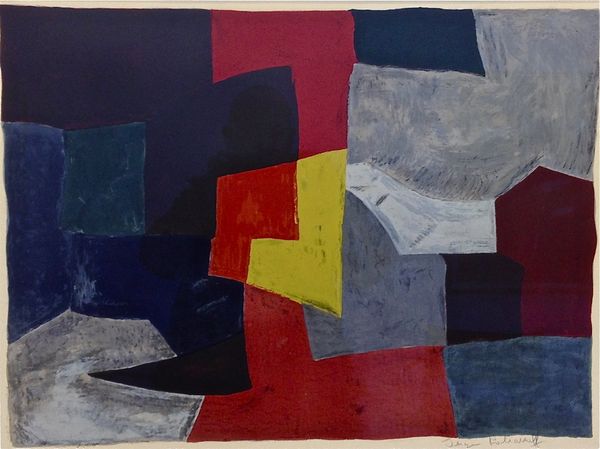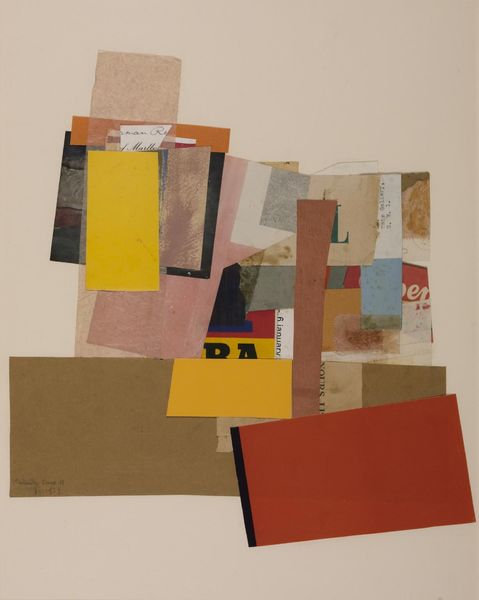
Dimensions: support: 756 x 419 mm
Copyright: © Angela Verren Taunt 2014. All rights reserved, DACS | CC-BY-NC-ND 4.0 DEED, Photo: Tate
Curator: This is Ben Nicholson’s "Feb 28-53 (vertical seconds)", currently held at Tate St Ives. Editor: My first impression is of a deconstructed cityscape, softened by the muted palette. The textures seem almost tactile. Curator: Indeed. Nicholson was deeply embedded in the St Ives artistic community, and his work reflects a broader modernist interest in abstracting from the everyday. Editor: I’m struck by how Nicholson balances the rough surfaces with precise lines. You can sense the labor involved in building up those layers. I wonder about his choice of materials here. Curator: The layering speaks to a dialog between painting and sculpture. Nicholson’s work always existed in this nexus of craft and high art, influenced by his Quaker upbringing and a deep respect for material honesty. Editor: Looking at it now, it’s clear that these shapes aren't just abstract, but also hold some historical and social significance. It shows what artists can do when they’re more focused on expression. Curator: Absolutely. Nicholson offers a powerful example of how art can reflect, and even shape, our understanding of the world around us. Editor: It's a thoughtful reminder that art is as much about process and intention as it is about the final product.
Comments
tate 8 months ago
⋮
http://www.tate.org.uk/art/artworks/nicholson-feb-28-53-vertical-seconds-t00051
Join the conversation
Join millions of artists and users on Artera today and experience the ultimate creative platform.
tate 8 months ago
⋮
This picture exemplifies Nicholson's recurrent practice of using contrasting areas of flat, vibrant colour with a pale ground that has been scrubbed and distressed. The bright patches of red and yellow act as focus points, and perhaps bring to mind late landscapes by J.M.W. Turner, such as those in the next room, which are similarly 'centred' by bright points of the same colours. But Nicholson would primarily have had in mind the grid-like abstracts of Mondrian, whom he greatly admired. There is a remarkable consistency in the way that Nicholson formulated his abstract designs, from his first such exercises in the 1920s (such as the picture displayed elsewhere in this room)though to the 1950s and '60s. Gallery label, August 2004
